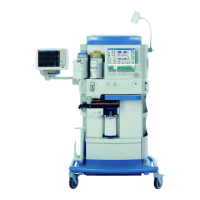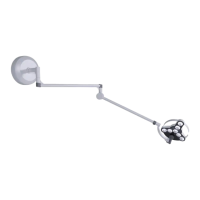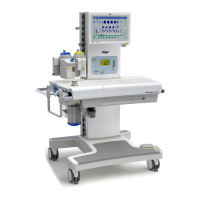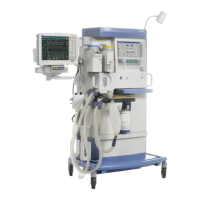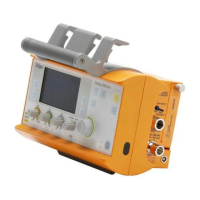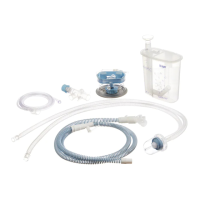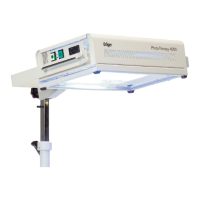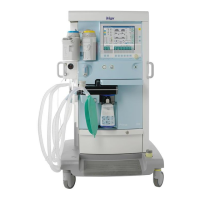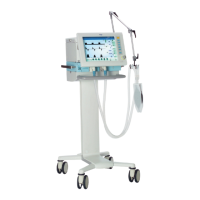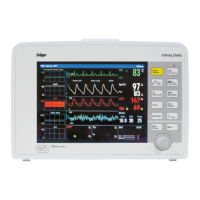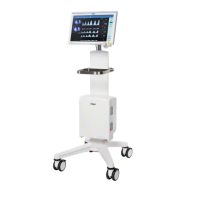
Do you have a question about the Dräger PulmoVista 500 and is the answer not in the manual?
| Technology | Electrical impedance tomography |
|---|---|
| EIT frequency | 50 kHz |
| Operating Temperature | 10 to 40 °C |
| Atmospheric Pressure | 700 to 1060 hPa |
| Protection Class | Class I |
| Degree of Protection | IP20 |
| Type | Electrical Impedance Tomography (EIT) Monitor |
| Application | Monitoring lung function |
| Display | Color display |
| Display Size | 15 inches |
| Trend resolution | 1 minute |
| Electrodes | 16 electrodes |
| Power Supply | 100-240 V AC |
| Storage Temperature | -20 °C to +60 °C |
| Safety Standards | IEC 60601-1, IEC 60601-1-2 |
Instructions for powering on the device and performing an automatic component check.
Guidance on choosing and applying the EIT electrode belt to the patient.
Details on how to select the correct size of the electrode belt based on patient circumference.
Step-by-step guide on connecting the patient cable to the electrode belt correctly.
Prepares the patient for EIT by checking and addressing potential issues affecting electrode placement.
Advises on moistening electrodes for better contact, especially on dry skin.
Details on using the mid position marker for correct placement on the patient's thorax.
Describes methods for attaching the belt, including lifting the patient or rolling them to the side.
Explains how to check skin electrode resistance and interpret the results for proper contact.
Lists essential settings to configure before initiating an EIT measurement session.
Describes the process to start an EIT measurement, including the calibration phase.
Provides guidance to verify the electrode belt's position for accurate EIT imaging.
Details how the device handles measurements when one electrode has insufficient skin contact.
Explains the primary views for monitoring tidal volume distribution in real-time and breath-by-breath.
Describes how to use the reference function to capture and compare EIT data at different points in time.
Explains how to define and use ROIs for quantitative analysis of ventilation distribution.
Details on using trend views to compare EIT data over time, identifying lung changes.
Introduces the diagnostic view for analyzing regional compliance and ventilation delays.
Guide to the initial window for preparing PEEP trial or customized EIT data analysis.
Explains how to interpret results from PEEP trial or customized analysis for patient management.
How to track and delimit ventilated lung regions using a virtual footprint for analysis.
Explains what negative impedance changes signify and their common causes.
Discusses filter options like low-pass and band-pass to improve EIT image quality and interpretation.
Instructions for taking screenshots and recording EIT measurement data.
Details on connecting and configuring the Dräger ventilator with the PulmoVista® 500 system.
Information on adjusting the frame rate for EIT image generation per second.
How to assess patient response to recruitment maneuvers using EIT data.
Using PEEP trials to identify and manage lung derecruitment and overdistension.
How patient positioning affects ventilation distribution and how EIT visualizes this.
Using EIT to visualize and track ventilation changes after patient proning.
How EIT helps detect faulty endotracheal tube placement.
Example of visualizing pleural effusion and its impact on ventilation.
Evaluating end-expiratory events and changes in lung impedance after suction.
